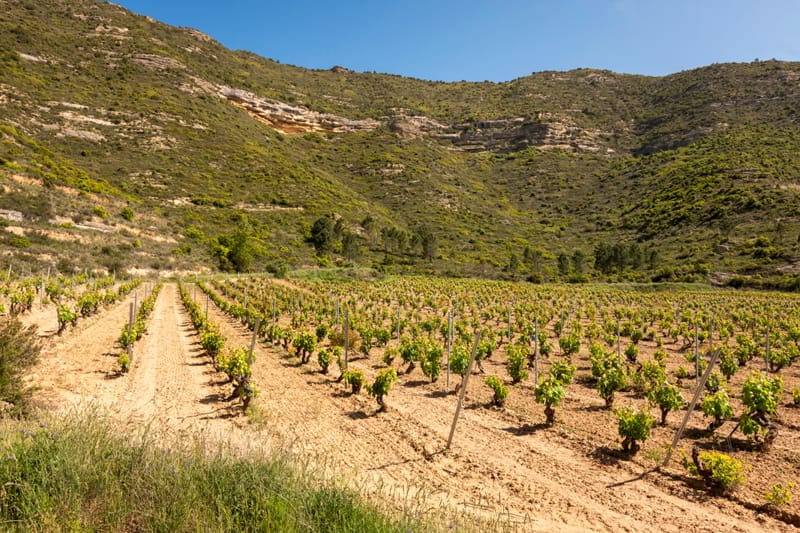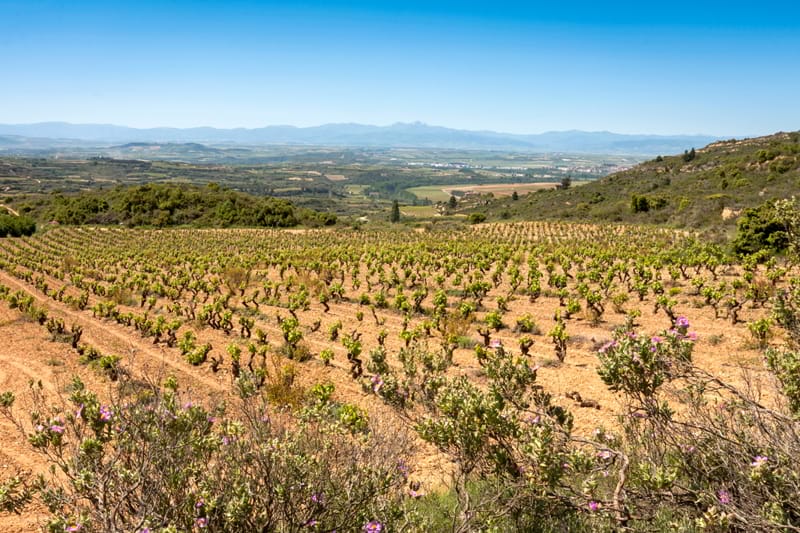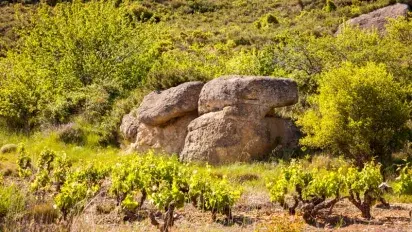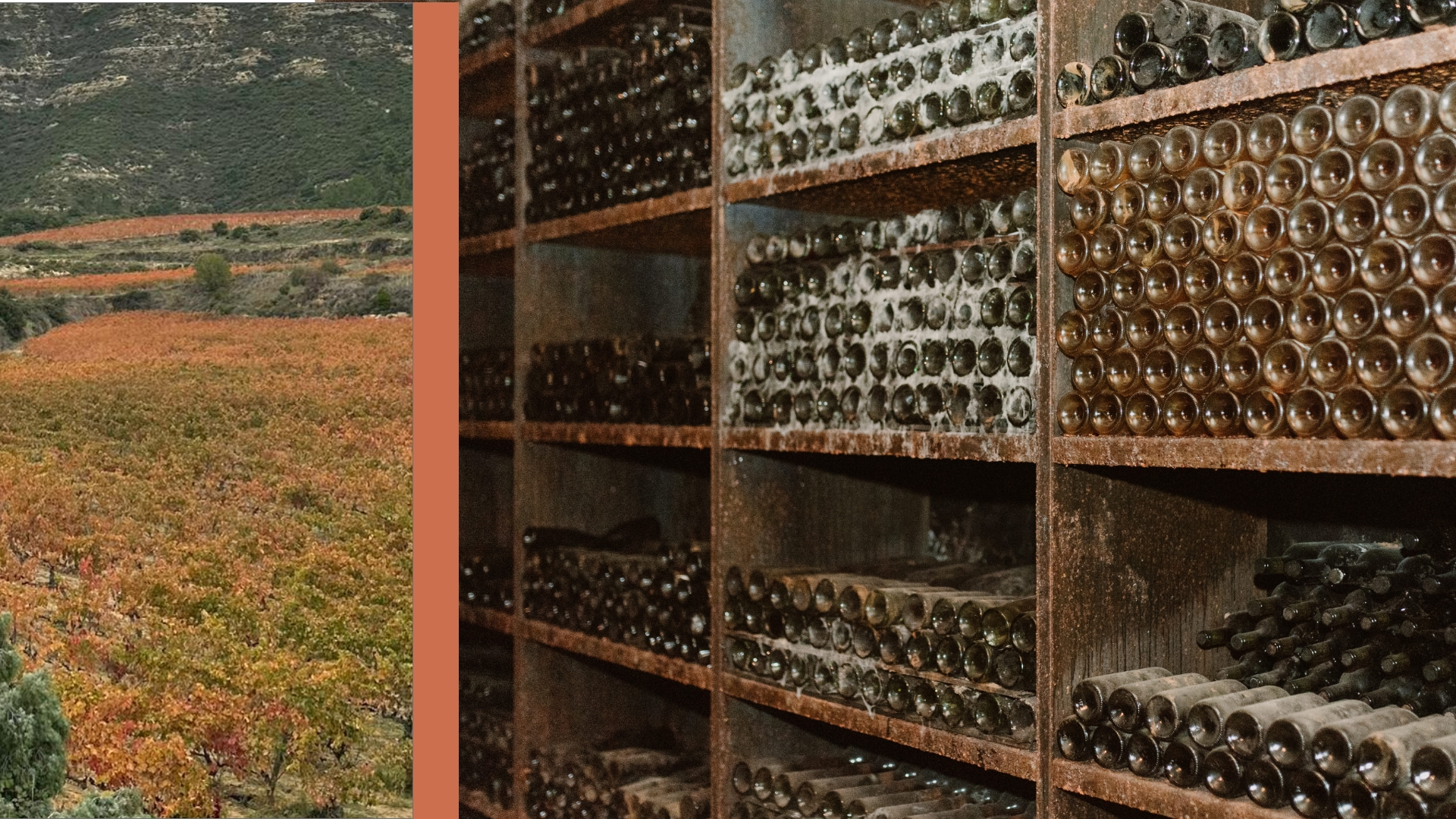Las Heces lies one of the most secluded vineyards in Rioja and arguably one of the northernmost.
Of all the land we work, our Vineyards in Briñas ("Viñas de Briñas"), 22 hectares divided into more than 50 small plots, are in the wildest area. Their old Tempranillo, Viura and Garnacha vinesare destined to make Conde de los Andes wines.
It is a fascinating place. High, secluded and facing south towards the wide Ebro valley, it liesat the foot of an imposing amphitheatre of distinctive ochre-coloured sandstone ridges dotted withwhite stains from the droppings of the vultures that breed in the cracks of the rock. Access is via a path that winds up from the Briñas road, among vineyards, kermes oak groves and ancient stone presses. The end of the route leads right up to the edge of the escarpment: it is the start of the Saigoba valley, under the western buttress of the Sierra de Toloño, known locally as La Picota.
We feel like we're in a hidden spot. The surrounding area is a reminder of an ancestral landscape, with the old vines set against the wild and steep hillside, where bushes, holm oaks and forest wildlife dominate. Getting here is not particularly difficult but the site is so unique that at times it seems as if we have travelled to another world. So different from the traditional Rioja landscape.

Halfway between Rioja Alta and Rioja Alavesa
Most of these spots are within the boundaries of Labastida (Rioja Alavesa), although they can be reached from the outskirts of Briñas, close to the banks of the Ebro, in Rioja Alta. In addition, many of the vineyards have been traditionally worked by grape-growing families in this small village on the banks of the river Ebro.
Our vineyard is mostly planted with Tempranillo, with vines that are on average over 45 years old. The Viura plots are also old and there are a couple of Garnacha plots planted in 1910 and 1940. With their grapes we have made the 1,162 bottles of the new Conde de los Andes Capítulo II Garnacha 2016.
The names of the sites
From the lowest area, the N-232 a road between Briñas and Labastida climbs up to the top of La Picota, at an elevation of 420 metres. In this ascent we cross different traditional places, some with wild names, others more "civilized", and even some with Basque influences.
The land register serves as a guide: El Prado, Las Cruces, Santurnia, Saigoba and, finally, Fuentezuelas, El Oso and Peña Las Heces, where most of the vineyards of Conde de los Andes are located. As a curiosity and according to some authors, the name 'saigoba' could come from the Basque words 'sai' and 'goba', i.e. vulture cave'.

You may also be interested in:




